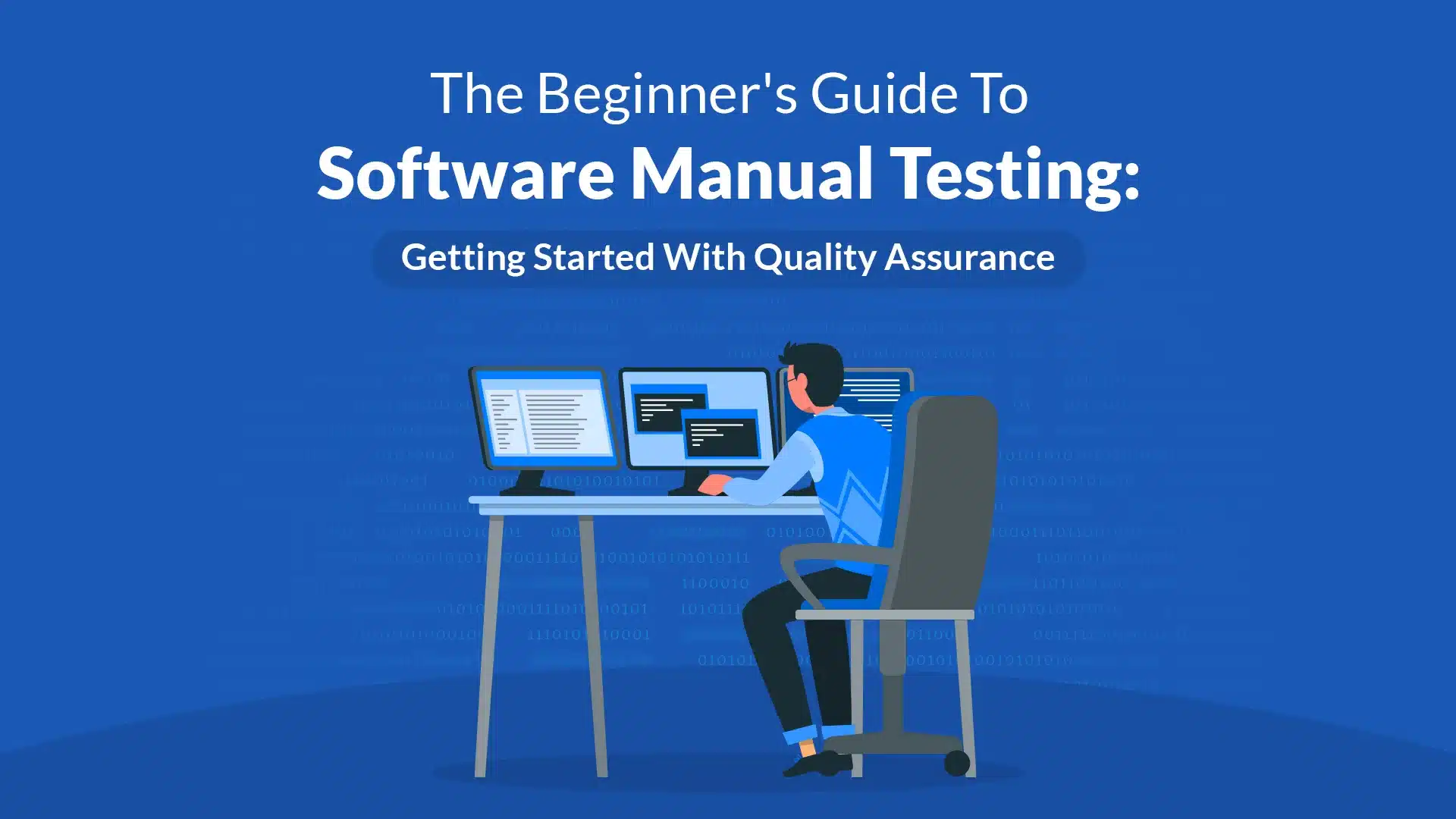Beginner’s Guide to Software Manual Testing and QA

5 October
Hey there! Are you new to the world of software manual testing? Don’t worry, we’ve got you covered! In this beginner’s guide, we’ll take you through the fundamentals of manual testing and equip you with the knowledge to embark on your QA journey with confidence. So let’s dive right in!
What is Software Manual Testing?
Software manual testing involves the process of verifying and validating software functionalities manually. Instead of relying on automation tools, manual testing requires testers to execute test cases, identify defects, and report their findings. Unlike automated testing, which relies on scripts and tools, manual testing requires human intervention to assess the software’s functionality, usability, and performance.
Understanding Quality Assurance :
Software manual testing is a vital aspect of quality assurance (QA), which plays a crucial role in ensuring that software adheres to specific standards and satisfies user requirements. Through QA, various activities such as testing, bug tracking, and feedback provision are carried out to enhance the overall quality of the software.
Getting Started with Software Manual Testing :
Now that you have a basic understanding of manual testing, let’s look at some essential steps to get started:
1. Understanding Requirements:
Before you start testing, it’s crucial to have a clear understanding of the software’s requirements. Familiarize yourself with the functionality, features, and expected behavior of the software.
2.Creating Test Cases:
Test cases serve as a roadmap for your testing activities. Write detailed test cases that cover various scenarios and help you determine if the software is functioning as expected.
3.Executing Test Cases:
Once you have created test cases, it’s time to execute them. Follow the steps outlined in each test case, perform necessary actions, and verify the expected outcomes. When you come across any defects, document them with proper steps to reproduce the issue.
4.Reporting and Tracking Defects:
As you find defects during testing, it’s important to document them effectively. Use a bug tracking tool or a spreadsheet to report defects, providing all the necessary details such as steps to reproduce, impact, and severity. This helps developers understand and fix the issues efficiently.
5.Performing Different Types of Testing:
Manual testing encompasses various types of testing, each serving a specific purpose. Some common types include:
- Functionality Testing: Verifying if the application works as intended, meeting all requirements and specifications.
- Usability Testing: Assessing how user-friendly the application is and its overall user experience.
- Regression Testing: Ensuring that new updates or changes do not adversely affect existing functionalities.
- Performance Testing: Analyzing the software’s speed, responsiveness, and stability under different loads.
6.Continuous Learning:
Software manual testing is an evolving field. Stay updated with the latest testing practices, tools, and methodologies. Attend workshops, read relevant blogs, and participate in online forums to enhance your knowledge and skills.
Conclusion
Congratulations! You have taken your first steps into the exciting world of software manual testing and quality assurance. Remember, manual testing requires attention to detail, critical thinking, and a keen eye for uncovering bugs. By creating a solid testing environment, mastering test case creation, and understanding different types of testing, you can contribute significantly to delivering high-quality, reliable software.
Happy testing and may you uncover the most elusive defects in your software journeys!
Click Here for more values!




